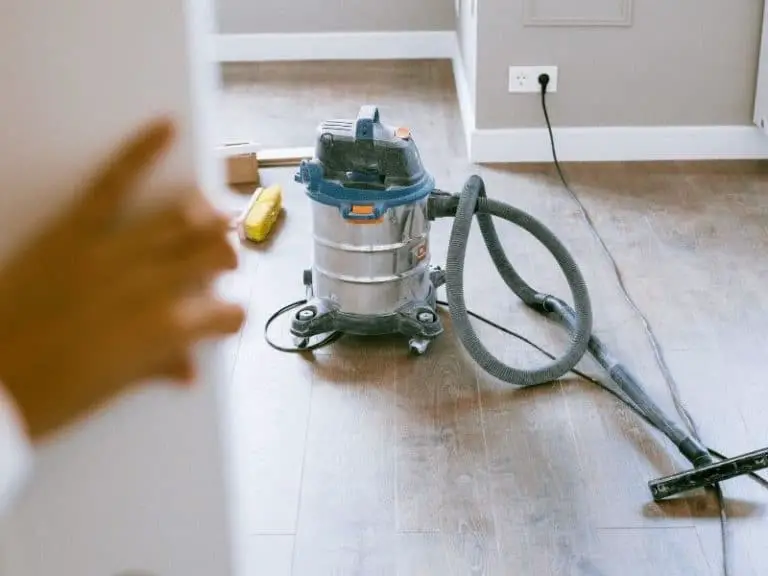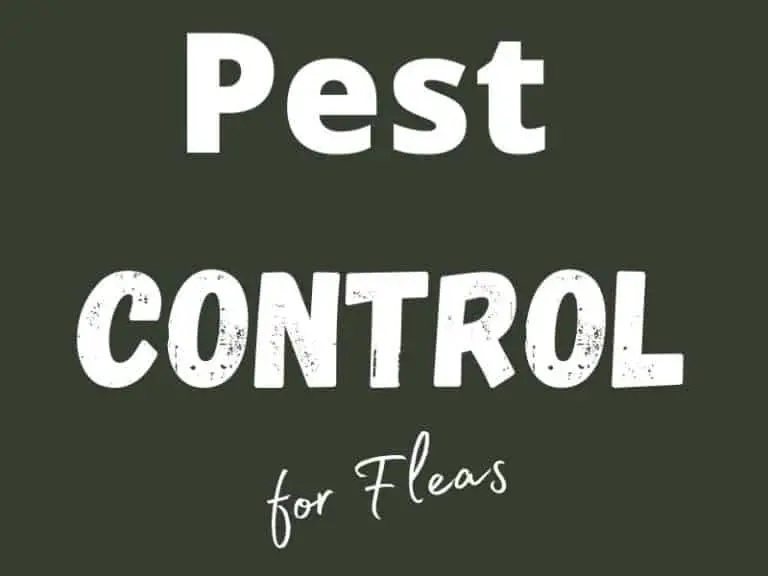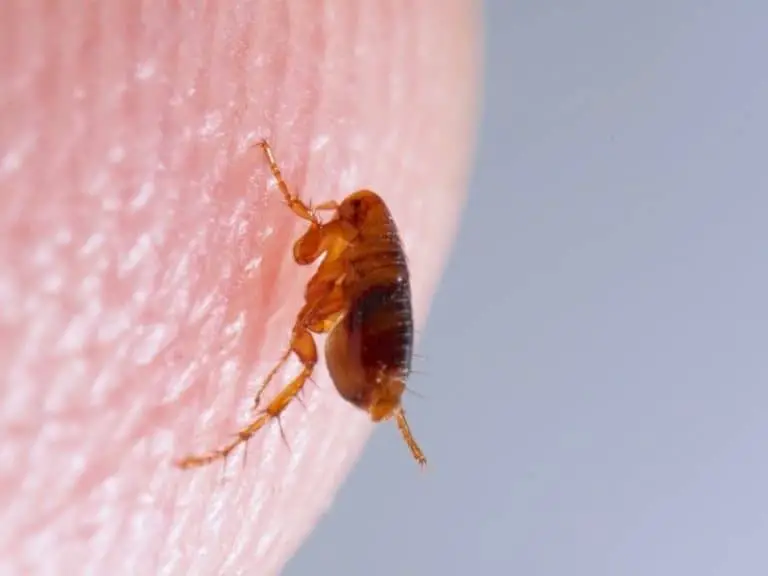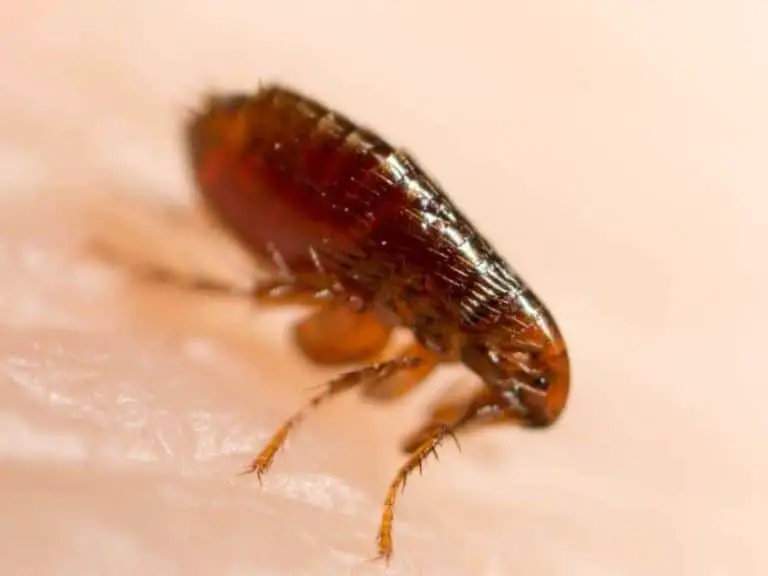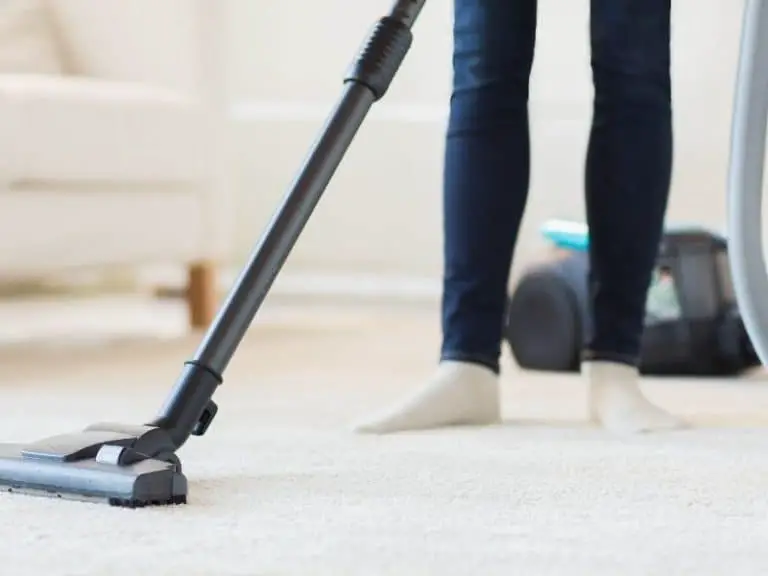Most Fleas Are Hiding In These 10 Places In Your House
Refrain from thinking that completely ridding your cat or dog of fleas will put the flea infestation to an end. Because flea eggs, larvae, pupae and adults can hide and survive in many areas in and outside your home, it can be difficult to get rid of those blood-sucking creatures. And now you may be wondering how to find sources of fleas.
The leading sources of fleas are pets. Pet beddings, kennels, and favorite hangouts, such as sofas, are hotspots, too. Beds, appliances, carpets, floorboard gaps, and cracks and crevices are also common flea sources. Outside the home tall grass and fallen leaves are the usual flea hiding places.
Continue reading if you are determined to rid your home of fleas. Below, we will talk about 10 of the most common sources of fleas in and around the home — and how to inspect them for the presence of fleas.
Pets
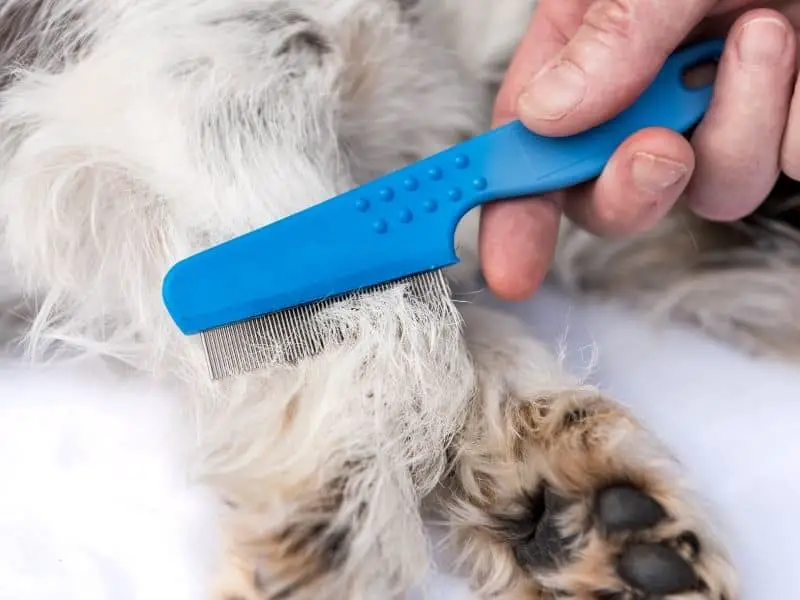
Adult fleas have a favorite host: your furry pet. It doesn’t come as a surprise since your cat or dog provides them with a steady dose of blood and the perfect living conditions, too.
This is why if you have a pet and it’s scratching all the time, start checking for fleas on your pawed pal’s body.
What you will need to inspect fleas on your pet:
- Flea comb or any fine-toothed comb
- Flat-ended tweezers
- Wet paper towel
While any part of your pet’s body can harbor fleas, those blood-sucking critters prefer the front end of cats and the back end of dogs. But to be sure, carefully inspect the entire body of your pet.
Armed with a flea comb, gently comb through your pet’s fur.
Wipe the flea comb through a wet paper towel after every stroke — immediately kill any fleas with a pair of flat-ended tweezers or by squishing it with your fingernail.
A red stain on the paper towel is a definite sign that what you just crushed is a flea.
Some of the things you may obtain from your pet may look like dirt. They are flea droppings (also called “flea dirt”) if they leave a reddish-brown stain on the wet paper towel.
You may inspect your cat or dog daily for fleas — by following the steps above, it is possible for you to completely rid your pet of fleas.
Unfortunately, they may get infested all over again if they pick up flea eggs or young or adult fleas hiding in and around your home. Don’t stop reading now to know where fleas tend to hide!
It’s a great idea to ask your trusted vet for the best oral or spot-on flea treatment for your whiskered chum.
Bedding
Places in and around your home that an infested pet likes to hang around can be considered flea hotspots.
One of those is your pet’s bedding. It’s because of this why, after inspecting your cat or dog, you should also check its bedding.
Getting rid of flea eggs, larvae, pupae and adults in the bedding is an important DIY flea removal process.
What you will need to inspect fleas in the pet bedding:
- Flashlight
- Magnifying glass
- Lint roller
Begin by doing an ocular inspection of the bedding.
Using a flashlight and a magnifying glass, look for specks that look like salt and pepper — the white flecks are likely to be flea eggs, and the black specks are likely to be flea poop.
Either way, getting rid of them is a must. The eggs will hatch into young fleas, and the droppings will nourish young fleas.
Yes, flea larvae and pupae eat the poop of adult fleas as well as other organic matters, too!
If you are lucky, you might see adult fleas crawling or jumping around your pet’s bedding. This is especially true if you disturb the bedding. You can try capturing them with a lint roller.
The presence of fleas — eggs, young and adults alike — in the bedding makes using a flea comb on your pet pretty much useless.
Each time your flea-free cat or dog uses its bedding, it will pick up fleas. It’s because of this why you should eliminate any flea eggs, larvae, pupae, and adults in your pet’s bedding.
What you should do is stash the bedding in a large garbage bag and seal it. Afterward, wash it in the washing machine with hot water. Any temperature that’s greater than 95°F will kill fleas on contact.
If the bedding is too large for your washing machine, take it to the nearest laundromat.
Kennel
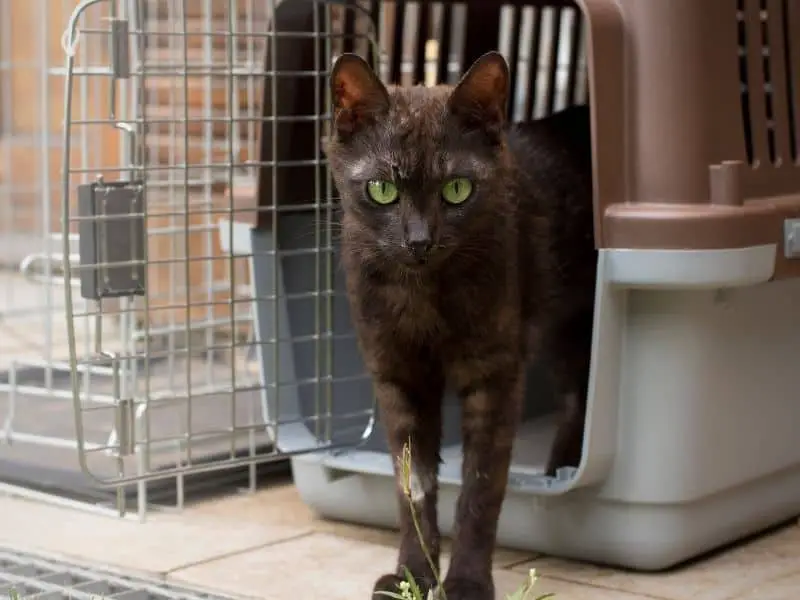
Besides the bedding, your pet’s kennel can also be considered a hotspot if your cat or dog has fleas. Since your pet visits its kennel frequently, there is a huge possibility that it is housing some fleas.
Whether located indoor or outdoor, it’s a must that you inspect the kennel for a flea-free home.
What you will need to inspect fleas in the kennel:
- Flashlight
- Mini broom brush and dustpan
- Bowl of soapy water
The problem with inspecting a kennel for fleas is that you will have to perform some acrobatics to squeeze your head or the top half of your body into it. Use a flashlight when inspecting dark areas in the kennel.
What you need to look for are white and dark flecks — again, the white specks are flea eggs and the dark ones are flea droppings that young fleas love to eat.
Use a mini broom brush and dustpan to remove them from the kennel. Afterward, dump them into a bowl of soapy water. It is a good idea if the water is hot.
If the dark-colored droppings that resemble ground pepper turn reddish-brown, it’s very much likely that they are flea poop. Don’t worry about the white ones. If they are flea eggs, the hot soapy water will kill them on contact.
Because there are flea eggs and droppings in the kennel, chances are there are also adult fleas.
Unlike your pet’s bedding, you cannot wash the kennel in hot water. But worry not because there is an easy and, more importantly, effective way to kill adult fleas around.
All you have to do is fill a spray bottle with either white vinegar or apple cider vinegar. Spray it on the corners and cracks and crevices inside the kennel. Spray the exteriors, too.
Vegetation
Fleas love to live on your cat or dog for a couple of reasons. First, your pet provides them with blood. Second, the body of your four-legged friend offers fleas the warmth they need to thrive and multiply.
Besides warmth, moisture is another thing that fleas love. This is why they can infest your yard, too.
What you will need to inspect fleas in the yard:
- Flashlight
- White crew socks
- Slippers
Just about any area in your yard that isn’t getting lots of sun can be a flea hotspot. Those tiny critters love living in the dirt under trees and bushes. They find shrubs and tall grass as the perfect hangouts.
Fleas get protection from the sun and avoid dehydration by hiding under fallen leaves and all sorts of debris in the yard.
To check for the presence of fleas in your yard, wait for the sun to set. That’s because fleas are nocturnal creatures — they prefer to feed, mate and carry out all sorts of activities at night.
Wear a pair of white crew socks and slippers, too, and head to some of the moistest places in your yard.
While shining a flashlight on your socks, gently shuffle your feet on the ground. If there are fleas around, you should see some of them hopping and ending up on your socks.
The next day, trim back bushes and trees, rake out leaves, sweep up trash, get rid of unused outdoor furniture — keeping your yard neat and free of clutter can help put a flea infestation outside your home under control.
It’s also a good idea to plant flea-repelling plants in your yard. Some plants that fleas cannot stand include: catnip, chamomile, chrysanthemum, lavender, lemongrass, marigold, mint, rosemary and sage.
Consider planting these plants near entrances, around windows and places that your pet frequents a lot.
Carpets
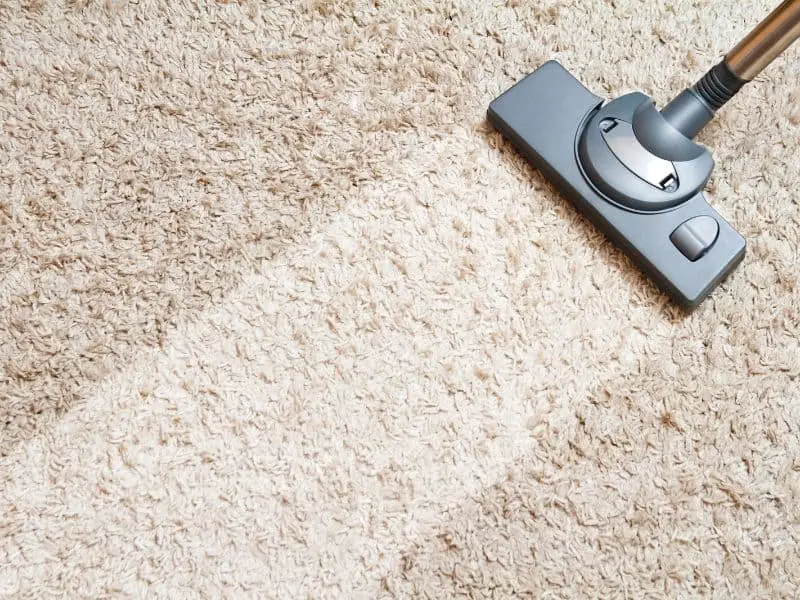
Refrain from assuming that carpet beetles are the only common household pests that can infest carpets. Fleas can also infest them. Flea eggs and young fleas are the ones that tend to live in carpets and rugs, too.
Flea larvae and pupae can live in carpets for up to three months, feeding on all kinds of organic matter.
What you will need to inspect fleas in carpets:
- White crew socks
- Paper towels
- Bowl of soapy water
It’s important to get rid of flea eggs, larvae and pupae residing in carpets. Otherwise, when the opportunity comes, young fleas will end up on your cat or dog.
And if there is no furry animal for them to feed on, fleas will bite your feet and lower legs to drink your blood. But they won’t be able to live on you because you do not have enough hair on your body.
Before that day comes, make sure that your carpet is flea-free. You can confirm whether or not there are fleas in your carpet by looking for flecks similar to salt and pepper grains — they are flea eggs and poop, respectively.
Put on a pair of white crew socks and lay some paper towels on the carpet. Gently drag your feet on the carpet and observe your socks and the paper towels.
You should notice some live adult fleas on them if the carpet is infested. You may also place a bowl of soapy water in the middle of the carpet — it will catch any jumping fleas.
Spring into action as soon as you have confirmed the presence of fleas in the carpet. You can eliminate flea eggs, larvae, pupae and adults by vacuuming the carpet thoroughly.
For best results, sprinkle baking soda or diatomaceous earth on your carpet. Rub it into the fibers.
After 12 hours, remove baking soda or diatomaceous earth (together with dead fleas) with a vacuum cleaner. Besides applying baking soda or diatomaceous earth and vacuuming, you may also steam clean the infested carpet.
Infested rugs may be washed in the washing machine with hot water.
Between Floorboards
Just because your home isn’t carpeted doesn’t mean that it’s free of fleas. Anything that can serve as a temporary home for fleas can be a flea hotspot. And that includes the tiny gaps between the floorboards.
Young fleas can live in spaces and cracks in the floor for many months until a furry pet comes along.
What you will need to inspect fleas on the floor:
- Magnifying glass
- Paper towels
- Toothpick
- Vacuum cleaner
Armed with a magnifying glass, inspect the gaps between the floorboards for the presence of flea eggs. They are whitish in color and about the size of a grain of sand or salt.
Flea eggs are easier to spot than flea droppings, which are dark in color and can easily blend in or be mistaken for dust.
To know whether a black speck is the fecal matter of a flea or not, rub it against a wet paper towel. If it disintegrates and leaves a reddish-brown stain, then it’s most likely to be flea poop.
Lay a paper towel on each side of the tiny space between two floorboards. Run a toothpick back and forth through the gap.
This should disturb adult fleas hiding in it, causing some of them to end up on the paper towels as they attempt to jump and escape.
It’s safe to assume that more fleas are hiding in other spaces between the floorboards.
Using a vacuum cleaner is also an effective way to check for the presence of fleas on the floor. Just make sure that you use one with a disposable paper dust bag so that you may inspect any collected fleas easily.
Practically any type of floor can harbor fleas. A carpeted floor can definitely attract fleas. A concrete floor with cracks and holes can also provide fleas with protection.
A floor that’s covered with vinyl tiles can invite fleas, too — fleas love to hide in vinyl tile edges and seams that have curled up.
Sofa Cushions
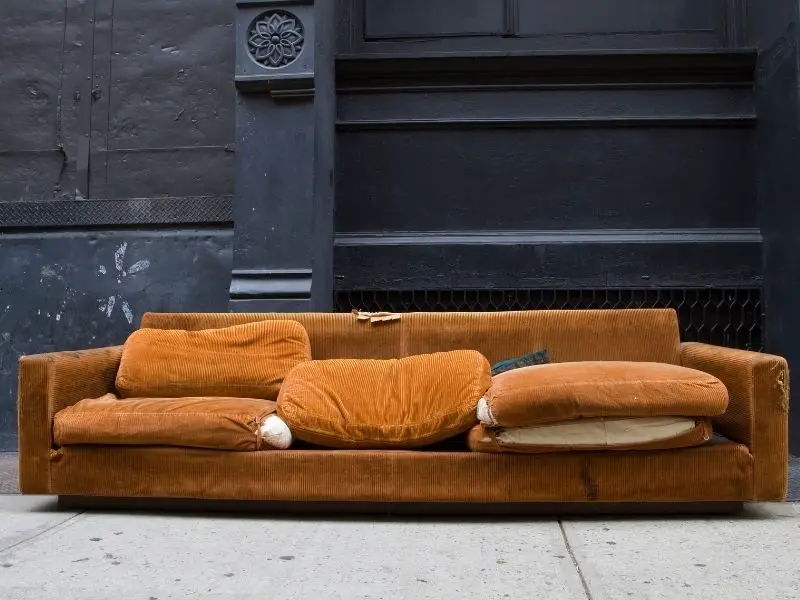
There are a couple of reasons why fleas love hiding in sofa cushions.
First, an infested cat or dog spends a great deal of time on or around the sofa.
Second, the seams provide fleas with the warmth and protection they need.
Needless to say, it’s a must to rid your sofa cushions of fleas to put the infestation to an end.
What you will need to inspect fleas in sofa cushions:
- Mini broom brush
- Packing tape
- Vacuum cleaner
If the seams of the sofa cushions are dusty, use a mini broom brush to remove dirt and grime. This will make it easier to check for the presence of fleas.
Carefully inspect the debris you will collect for the presence of flea eggs and poop. In some instances, you may also notice some adult fleas jumping all around.
Some fleas may remain in the seams after running a mini broom brush through them. Worry not because this is when a packing tape will come in handy — press a strip of it against the seam to collect any hiding fleas.
Fold the strip of packing tape and crush trapped fleas with your fingernails.
Fret not if you don’t have plenty of time to deal with fleas using packing tape.
That’s because you may instead take the vacuum cleaner out of storage and use it to suck out flea eggs, larvae, pupae, and adults hiding in the sofa’s cushions. Make sure that you dispose of the dust bag properly.
Besides the sofa cushions, it’s very much likely for fleas to hide in just about any upholstered piece of furniture, too.
In other words, if it has a soft, padded covering and your pet hangs out on or around it, spend some time inspecting it for the presence of flea eggs as well as young fleas and adult fleas.
Bed
Above, it was mentioned that practically any upholstered piece of furniture could serve as a hiding place for fleas. Since your bed is one gigantic upholstered furnishing, it doesn’t come as a surprise why it may harbor fleas.
The problem with having fleas in your bed is that your blood provides fleas with sustenance as you sleep.
What you will need to inspect fleas in the bed:
- Packing tape
- Flashlight
- Mattress protector
It’s terrifying to think that fleas could be feasting on your blood while you are taking a trip to dreamland.
Besides adult fleas drinking your blood, flea larvae and pupae could also be eating the flakes of skin on your scalp — young fleas eat dandruff and other organic matter, too, such as the hair on your head!
This is why you should examine your bed for the presence of fleas before you sleep in it.
With the help of packing tape, see if flea eggs and live fleas are hiding in the seams and piping of your mattress and box spring.
Be patient and get a new strip of packing tape when the one you are currently using is already jam-packed with dust and dirt.
Don’t forget to inspect each packing tape strip for the presence of flea eggs, larvae, pupae, and adults.
Since fleas are nocturnal creatures, it’s a good idea to look for them at night. You may also look for them in the daytime, but switch off the lights and draw the blinds or shades, and then arm yourself with a flashlight.
While inspecting the mattress and box spring, wash linens in hot water and tumble dry them on high, too.
In terms of dealing with bed bugs, there is a product proven effective. It’s none other than a mattress protector. What’s nice about a mattress protector is that you may also use it to control a flea infestation.
Install one and do not remove it for two to three months — that’s how long fleas can live without feeding.
Cracks and Crevices
If there are no warm-blooded animals around for adult fleas to feed, live and lay eggs on, they will temporarily seek refuge in some of the most accessible hiding places. And they include cracks and crevices.
The moment that your pet is nearby and creates a vibration, fleas will hop onto it without any delay.
What you will need to inspect fleas in cracks and crevices:
- Toothpick
- Bond paper
- Vacuum cleaner
It’s unlikely for you to find flea eggs in cracks and crevices in the walls.
On the other hand, there is a possibility for you to come across flea eggs in spaces and holes in the floor — they are likely to have fallen from your pet’s body.
Either way, removing fleas, no matter the life stage, from cracks and crevices is crucial for ending an infestation.
Checking for fleas in the walls is easy. Place a piece of bond paper below the crack or crevice. Insert a toothpick into the potential hiding place and jiggle it to aggravate any adult fleas inside. Observe the bond paper for fleas.
The same steps may be done when examining cracks and crevices on the floor, but with the bond paper laid on one side of the gap or cavity.
But if you want to save a lot of time, count on your trusted vacuum cleaner. Don’t forget to attach the crevice tool and inspect the dust bag outside your home afterward.
Top of Appliances
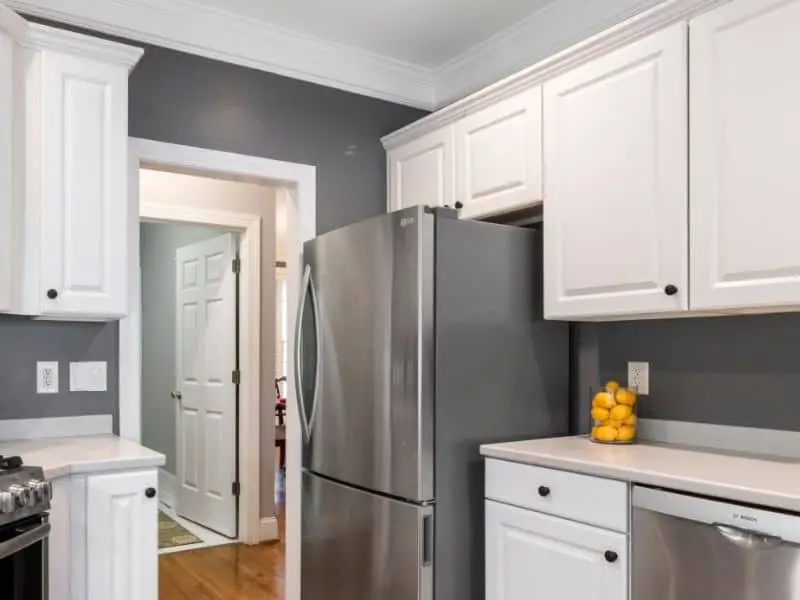
Do you own a cat instead of a dog?
Then it’s very much likely for fleas to be more widespread in your home if your purring pal is infested. It’s because a cat loves to hang out in more places than a dog, including the top of appliances.
Since fleas can jump vertically up to eight inches, it’s no wonder why fleas could be hiding in hard-to-reach places!
What you will need to inspect fleas on top of appliances:
- Step chair
- Lint roller
- Vacuum cleaner
Some of the most challenging places to inspect for the presence of fleas are the top of appliances. This is especially true for tall and overhead ones.
Due to this, you will need a step chair. It’s also a must that you practice caution at all times to prevent falling and ending up with an injury.
Use a lint roller in places that you wish to examine but cannot see — if there are flea eggs or live fleas around, some of them will stick onto the lint roller. Unfortunately, dirt and debris will stick to it, too.
This is when the benefit of using a vacuum cleaner comes in. The best one for the job is something that has a disposable dust bag.
And before you start vacuuming the top of appliances that could be infested with fleas, install a new dust bag to make it easier to check for the presence of flea eggs and young and adult fleas later.
Speaking of which, inspect the dust bag outside your home, preferably while placed in an open garbage bag. The goal is to keep adult fleas from escaping and hiding in other areas of your home.
Just Before You Look for Fleas
Refrain from assuming that fleas can only infest your pet. Those blood-drinking critters can infest many areas in and around your home, too.
Especially if you want to deal with the infestation with your own two hands, it’s a must that you inspect every potential hiding place to exterminate all flea eggs, larvae, pupae and adults.
Photo credit: ©canva.com
Medical Disclaimer: TheHomePestControl is a digital publisher and does not offer personal health or medical advice. The contents of this website are not intended to substitute for professional medical advice, diagnosis, or treatment.
Affiliate Disclaimer: As an Amazon Associate, I earn from qualifying purchases made on our website. If you make a purchase through links from this website, I may earn a commission at no additional cost to you.

